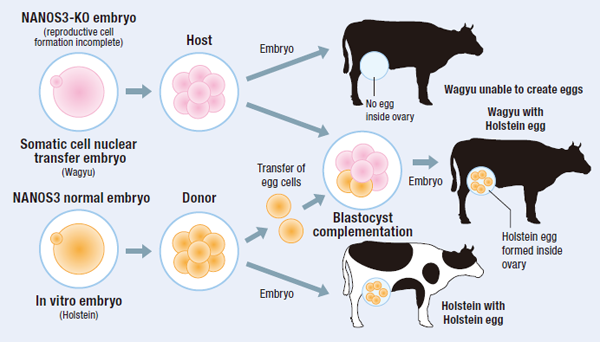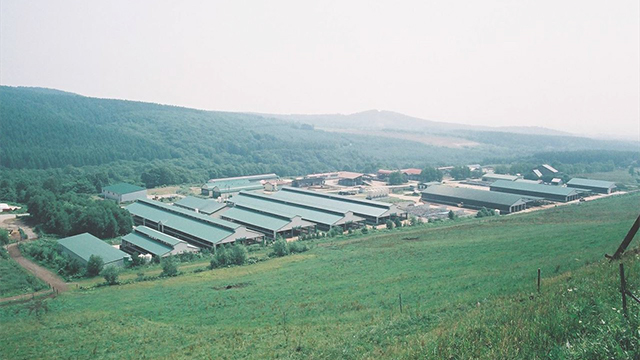
Research and Development
Livestock Production Business
ET Center
Embryo transfer (ET) technology is utilized widely in Japan to produce high genotypic Wagyu (Japanese black beef) cattle. The ET Center was the first in the JA Group to embark on research and development in pursuit of leading-edge ET technology. It supplies about 23,500 bovine embryos and 1,050 pregnant heifers to farmers across Japan each year.
With the goal of achieving as many pregnancies as possible, staff members of the ET Center visit farmers in every region of Japan, offering a ZEN-NOH ET system that offers a full range of services, from treatment of estrus synchronization to ET. Going forward, the ET Center will continue to focus on the field of animal reproduction and to develop, test, and provide farmers with the latest technologies.
The Center also plays an active role in R&D on bovine ET technology, and the results of such research are used in production activities. However, in this field of study, many areas still remain unexplored. Therefore, the Center will continue to explore these areas and develop products that more and more farmers will be able to use widely in the future.
- Research, development and guidance
-
- Product development relating to compound feeds, superior feeder livestock, and production materials and machinery
- Guidance on breeding management
- Development and promotion of technology for improving productivity
- Testing to ensure safety and security
-
- Strict embryo selection standards to achieve a high conception rate
R&D achievements
Chilled embryos
The incomes of Japanese livestock farmers could be increased if it were possible to develop viable embryos without damage from cryopreservation and the ability to be handled in the same manner as fresh embryos, and to distribute these embryos quickly throughout the country. From this standpoint, the ET Center has carried out research and development of hypothermic storage technology for bovine embryos. The researchers at the center found that the use of fetal bovine serum (FBS) and medium 199 as composites of the hypothermic preservation solution enables preservation of embryos at a non-frozen temperature (4–5°C) for about three days. They also succeeded in extending the period of preservation to seven days by finely controlling the concentration of HEPES, contained in medium 199 to maintain physiological pH (Publication No. WO2014-030211).
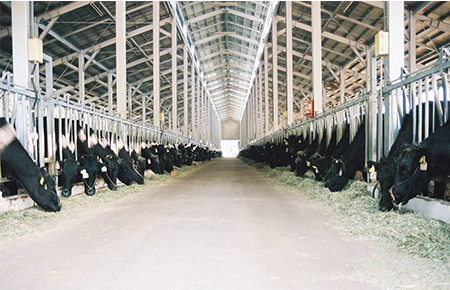
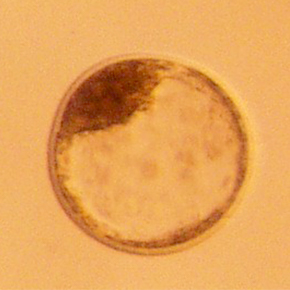
ZEN-NOH ET system
The ET Center implements its efficient ET system mainly in Hokkaido where it has its main facility, and in Iwate, Ibaraki and Fukuoka where its branches are located. The system comprises a number of steps, including: estrous synchronization of multiple recipient cows; implementation of blood profiling tests if necessary; confirmation of the existence of a fully developed corpus luteum in the ovary using an ultrasound imaging device before conducting ET; and transport of embryos in the hypothermic (hibernated) condition. These steps have been established to form a stable technology that is applied by staff members at the ET Center who are specialized in ET technology and JA staff members who have a wealth of knowledge and experience in livestock farming.
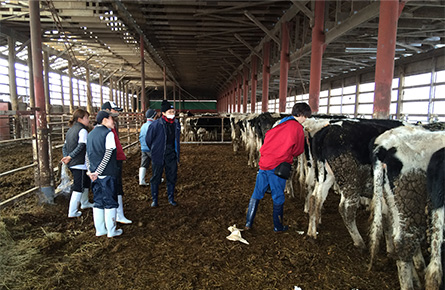
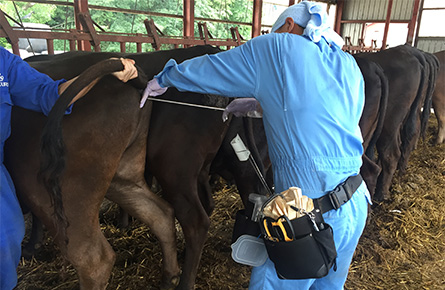
Embryo collection on farms
With a view to maintaining and enhancing the infrastructure for livestock production in Japan and meeting various needs from farmers and increasing their income, the ET Center collects embryos on farms. The staff members of the center collect embryos from superovulated cows on farms. ZEN-NOH purchases all these embryos to transfer to recipient heifers on farms and to supply frozen embryos nationwide.
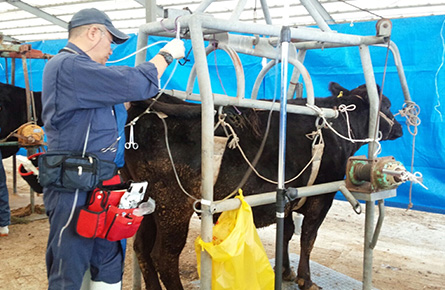
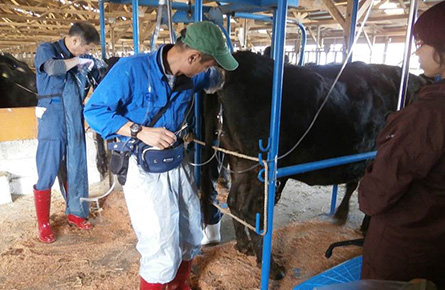
Established technology for replacing germ cells between different species
The ET Center succeeded in having Wagyu cattle produce oocytes of a different species, Holstein, in their ovaries. This technology is expected to be applied to mass production of high-added-value cattle and developed into a technology for producing sperm and oocytes of endangered animals efficiently using animals of different species. This achievement was published in the British online scientific journal Scientific Reports (patent pending; Application No. PCT/JP2016/061224).
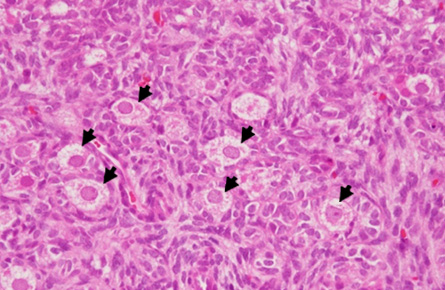
Figure: Holstein oocytes produced in the ovary of Wagyu cow (indicated by arrows)
